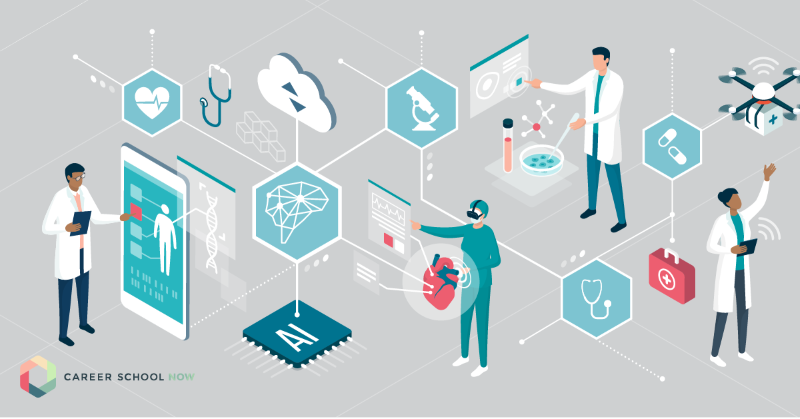Top Skills Required to Master Medical Administration Duty Today
Best Practices in Medical Administration for Improving Performance and Minimizing Costs
In the ever-evolving landscape of health care, the pursuit of finest practices in medical management is vital for enhancing effectiveness and curbing expenditures. By integrating sophisticated modern technologies such as electronic health and wellness records and telemedicine, health care companies can improve operations and enhance individual treatment. Nevertheless, technology alone is not a panacea; enhancing source appropriation and fostering collective interaction among care teams are equally crucial (medical administration). As organizations make every effort to balance quality and cost, what approaches should be focused on to attain these dual goals? The solutions to these concerns hold the key to a more lasting medical care system.
Leveraging Advanced Innovation
In today's quickly developing health care landscape, leveraging innovative innovation is no more optional yet important for efficient clinical management. The combination of digital solutions into healthcare systems has changed the means centers run, improving procedures and boosting client care. Electronic Health And Wellness Records (EHRs) are critical, providing comprehensive individual information that can be accessed instantaneously by accredited employees, thus reducing redundancy and reducing mistakes. By systematizing person details, EHRs remove the demand for difficult documentation and help with seamless interaction among health care companies.
Telemedicine is another technical improvement that has actually changed individual communication. It provides benefit for both individuals and medical care specialists by enabling remote consultations, which can reduce the requirement for in-person gos to and optimize visit organizing. Additionally, telehealth platforms can extend healthcare accessibility to rural or underserved locations, bridging gaps in treatment distribution.
Moreover, using Expert system (AI) and machine knowing is ending up being progressively common in anticipating analytics, enabling very early discovery of potential health problems and more educated decision-making. These technologies, when incorporated properly, can boost diagnostic precision and individualize individual therapy strategies, eventually causing enhanced medical care results and operational effectiveness.
Optimizing Resource Allowance
By purposefully taking care of resources such as employees, tools, and finances, health care facilities can dramatically enhance their functional efficiency, improve client results, and lower unneeded expenses. The first step in optimizing resource appropriation entails carrying out an extensive assessment of present properties and determining locations where resources may be underutilized or overextended.
Focusing on source allocation based on individual requirements and solution needs is vital. This involves aligning resources with high-demand locations, such as emergency care or specialized therapies, to guarantee timely and reliable client care. Applying versatile staffing models can likewise enhance labor sources by changing employees allocation in feedback to changing patient quantities. In addition, embracing telemedicine and other technological options can reduce physical source restrictions by providing different avenues for patient-provider interactions.
Funds must be carefully checked and designated with strategic foresight to support both short-term operational demands and long-term institutional goals. This consists of investing in training programs that improve staff proficiencies and adopting energy-efficient practices that minimize functional expenses (medical administration). Inevitably, a maximized resource allowance strategy fosters a sustainable medical care atmosphere that is responsive, reliable, and monetarily sensible
Streamlining Process Procedures
When health care facilities purpose to enhance operational effectiveness, enhancing operations processes becomes a crucial emphasis. Efficient process decrease redundancy, get rid of unneeded steps, and boost coordination amongst medical care specialists. This approach not only speeds up solution shipment but click here for more additionally enhances the quality of person care.

Following, innovation combination plays a considerable function in enhancing operations. Carrying out electronic wellness records (EHRs) and computerized medical professional order access (CPOE) systems decreases documents, reduces human mistake, and makes sure details is available to all appropriate workers. Furthermore, leveraging telemedicine platforms can simplify patient assessments and follow-ups, reducing the pressure on physical facilities.

Eventually, structured process result in set you back decreases and improved patient satisfaction, cultivating a more sustainable healthcare atmosphere.
Enhancing Information Administration
Building upon structured workflows, optimizing data management becomes an essential part ahead of time health care administration. Efficient information administration systems are crucial for maintaining precise individual records, boosting decision-making, and guaranteeing compliance with regulatory criteria. By executing durable data monitoring remedies, health care centers can improve the high quality of patient treatment while all at once reducing operational costs.
One secret aspect of improving information administration is the assimilation of advanced electronic wellness document (EHR) systems. These systems assist in the smooth exchange of individual details across different divisions, minimizing replication of tests and reducing errors. A well-designed EHR system supports data analytics, allowing doctor to recognize patterns and make informed decisions relating to patient treatment.
Additionally, guarding patient information is critical. Embracing comprehensive cybersecurity procedures, including security and routine audits, ensures the honesty and discretion of delicate info. This not just secures individuals yet also preserves the institution's credibility.
Purchasing staff training is an additional vital aspect. Educating health care professionals on information management practices boosts their capability to efficiently utilize technology, causing enhanced individual end results. Finally, boosting information monitoring through sophisticated technology and detailed training is important for attaining efficiency and cost decrease in medical administration.
Fostering Collaborative Communication
An essential element ahead of time clinical administration is cultivating joint interaction amongst healthcare read the full info here professionals. Reliable interaction is extremely important for guaranteeing seamless individual care, maximizing therapy results, and decreasing errors. By encouraging open dialogue and coordination throughout multidisciplinary teams, healthcare organizations can boost their operational performance and decrease unnecessary prices.
Central to this technique is the assimilation of communication innovations such as digital health and wellness records (EHRs) and safe and secure messaging platforms, which promote the rapid exchange of critical patient information. These devices allow health care providers to access and share information in real time, making certain that all staff member are notified and straightened in their decision-making procedures. Additionally, normal team meetings and interdisciplinary rounds explanation can better advertise a society of collaboration and accountability.
Training programs concentrated on improving interaction skills are also vital. These programs can assist staff develop the ability to communicate info clearly and listen proactively, hence minimizing misconceptions and promoting an encouraging work environment. Additionally, embracing standardized interaction procedures, such as SBAR (Scenario, History, Analysis, Referral), can streamline the exchange of information, making certain that critical information are conveyed succinctly and effectively. Eventually, fostering collective interaction causes enhanced healthcare shipment and cost savings (medical administration).

Final Thought
Integrating sophisticated modern technology, such as digital health records and telemedicine, along with maximized resource allowance and streamlined operations procedures, is crucial for boosting efficiency in clinical administration. Efficient data management and cultivating collaborative communication amongst medical care teams are important for minimizing redundancies and improving treatment quality. By focusing on preventive treatment and taking part in quality enhancement initiatives, medical care organizations can accomplish substantial expense financial savings and improved person results, thereby making certain sustainable health care delivery in an increasingly complex setting.